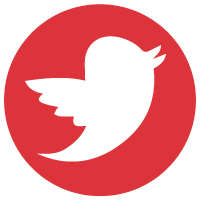
OTC & Pharmaceutical
The most relevant information about the OTC & pharmaceutical industry in some of the countries where we currently work.
![]()
CANADA
- The pharmaceutical sector is one of the most innovative industries in Canada. It is composed of companies developing and manufacturing innovative medicines and generic pharmaceuticals, as well as over–the-counter drug products.
- Pharmaceutical sales in Canada have a 1.9% share of the global market, making Canada the 10th largest world market. Since 2011, compound annual growth has remained positive at 2.8% (IMS Pharmafocus 2021).
- Canada pharmaceutical expenditure is around $24 billion CAD ($18 billion US in 2015); representing around 10.6 % of the total healthcare expenditure and 1.2% of the GDP.
- Canada has some of the highest generic drug cost in the world. Generics make up 24% of the market and 67% of prescription volume.
- Companies undertake research and development (R&D) to develop new or improved patented therapies, while others develop bio-equivalent copies of innovative drugs once patents expire. An emerging field of biologics and subsequent entry biologics (SEBs) is also taking shape.
- Brand-name products account for 78% of Canadian sales and 30% of prescriptions. Generics account for the rest (IMS Pharmafocus 2021).
- The industry is clustered mainly in the metropolitan areas of Toronto, Montreal and Vancouver.
- Canadian drug sales:
- According to the 2016 PMPRB Annual Report, from 2001 to 2016, total pharmaceutical sales (including non-patented over the counter medicines) in Canada have doubled to $25.5 billion, with 88.4% sold to retail drug stores and 11.6% sold to hospitals. Governments account for 42.7% of drug expenditures and private payers account for the remaining 57.3% (private coverage and individuals).
- Annual domestic pharmaceutical manufacturing production is valued at $9.6 billion in 2017 with a compound annual growth rate of 0.66% since 2008 (Statistics Canada).
- International trade:
- From 2001 to 2017, pharmaceutical exports and imports between Canada and the rest of the world increased by 44% and 32% respectively.
- More than half of Canadian production is exported (primarily to the United States) and a significant portion (68%) of the Canadian market is supplied by imports (37% of imports from the U.S. and 40% from the EU).
- More than 60% of total health expenditures were directed to hospitals, physicians and drugs.
- Pharmaceuticals are the second largest component of health care expenditures, representing 16% of total expenditures.
Source:
![]()
MEXICO
- Mexico is the second largest market in Latin America in the pharmaceutical industry after Brazil. It is the 12th in the world.
- In 2018 generate a direct impact on 161 branches of economic activity
- Produces about 87,000 direct jobs and just over 400,000 indirect
- Contributes approximately 7% of the manufacturing Gross Domestic Product in Mexico.
- In 2015 the global production of the pharmaceutical industry was $1,228 billion USD.
- It is expected that by 2020 it will reach a global production of $1,831 billion USD with a growth of 5.8%
- In 2014 the production in Mexico was $11,430 million USD with an added value of 54.4%
- It is expected that by 2015-2020 this industry will grow 5.2%
- Mexican consumption in pharmaceutical industrial was $14,522 millions USD in 2014
- Consumption is expected to grow 5.5% for the period 2015-2020
- In 2015 Mexico was the first Latin American exporter, exporting a total of $1,958 million dollars.
- The main exports went to Switzerland (23.1%), the United States (22.4%), Panama (7.8%), Venezuela (6.5%) and Colombia (5.6%).
- In recent years the country received a direct investment of $164 million USD, from the United States, Luxembourg and Ireland.
- In 2015, Mexico stands out as one of the countries with the greatest savings in manufacturing of the pharmaceutical industry.
- The establishments and the increase in OTC sales of 58.7% between 2012-2017 in Mexico, reached a value of $216.79 million dollars, and by 2022 the expectation of value is 249.67 million dollars, a growth of 15.2% of 2017 to 2022, according to the international market consultancy Euromonitor.
- Generic drugs in Mexico represent 45% of the sales value and 70% of the units in the market.
- Mexico is One of the Latin American markets more developed in the subject regulatory
- Mexican pharmaceutical industry spending totalled just USD $160 million on Research and Development (R&D) in 2015.
- 14 of the 15 leading international companies are in the country, which made Mexico as one of the main manufacturing centers worldwide.
Source
http://www.promexico.gob.mx/documentos/diagnosticos-sectoriales/farmaceutico.pdf
https://lideresmexicanos.com/noticias/la-industria-farmaceutica-una-prioridad-en-mexico/
![]()
USA
- The U.S. pharmaceutical market is the world’s most important national market. Together with Canada and Mexico, it represents the largest continental pharma market worldwide.
- The US market was an important driver of growth, rising 4.3% to $337bn in 2018, from $323bn in 2017, representing 39% of the global market.
- In 2016, this share was valued around 446 billion U.S. dollars. Many of the global top companies are from the United States.
- Almost $60 billion U.S. dollars are spent annually on pharmaceutical R&D purposes in the United States.
- More than 800,000 people work in the biopharmaceutical industry in the United States across a broad range of occupations, including scientific research, technical support, and manufacturing. Directly and indirectly, the industry supports more than 4.7 million jobs across the United States.
- The 2018 spending was $485 billion, up 5.2% over the previous year, and the 2023 spending will be $625-655 billion, representing a 4-7% CAGR over the five-year period.
- Revenue in the OTC Pharmaceuticals market amounts to US $23,062m in 2019. The market is expected to grow annually by 2.3% (CAGR 2019-2023).
- In the United States, there are an estimated 100,000 OTC drug products marketed and sold in a variety of outlets, such as pharmacies and convenience stores. The OTC market in the United States is expected to continue growing due to an aging population, consumer trends towards self-medication, and the conversion of drugs from prescription to OTC status.
- Fizer's 2018 revenue from U.S market was $25.32 billion, continue by Johnson & Johnson registered highest revenue from USA market at USD 23.28 billion (Pharma division) which is an increase of +8.43%, compared to 2017.
- In 2018, Rx drug sales for the top 15 ranked companies grew above average, at 5.2%, and represented 69.1% of the US market.
- Many medical and pharma trade shows around the year in United States help this industry to be one of the most prosperous industries in the world.
Source:
https://www.statista.com/topics/1719/pharmaceutical-industry/
https://www.selectusa.gov/pharmaceutical-and-biotech-industries-united-states
https://10times.com/usa/medical-pharma/tradeshows
![]()
BRAZIL
- Brazil is now one of the most attractive and promising pharmaceutical markets in the world.
- Revenue in the OTC Pharmaceuticals market amounts to US$4,377million in 2019. The market is expected to grow annually by 1.6% (CAGR 2019-2023).
- In global comparison, most revenue is generated in United States (US$23,062million in 2019).
- In relation to total population figures, per person revenues of US$20.61 are generated in 2019.
- The Brazilian pharmaceutical market was set to grow from $25.3 billion in 2016 to $29.9 billion in 2021, representing a compound annual growth rate of 3.5%, according to Global Data, a recognized leader in providing business information and analytics.
- In 2017, Brazil imported US$ 6.5billion in medicines and raw materials
- Worldwide, Brazil has the 6th largest chemical market and, in the last 20 years, the industry grows in rates above 7% per year, representing approximately 3% of the total GDP, or 10% of the entire manufacturing industry.
- Many of the Brazilian companies specialize in the manufacture of generic medicines, which in Brazil is responsible for more than 27% of sales in units of the whole pharmaceutical market.
- In Brazil there are 72,000 establishments. Of these, 12,000 are from Abrafarma and other networks, and 60,000 are independent.
- Brazilian laboratories, backed by the boom of generics, which today represent 20.6% of sales, are investing massively in R & D to develop products with higher added value.
Source:
https://www.globaldata.com/brazils-highly-attractive-pharmaceutical-market-approach-30-billion-2021/
https://www.pwc.com.br/pt/publicacoes/setores-atividade/assets/saude/pharma-13-ingles.pdf
https://www.statista.com/outlook/18000000/115/otc-pharmaceuticals/brazil
https://www.export.gov/article?id=Brazil-Healthcare




